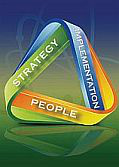Speaker
Thomas Shea
(TomSheaNuclear Consulting Services)
Description
One year following the indefinite extension of the NPT, the IAEA, the United States and the Russian Federation entered into a cooperative effort aimed at creating a verification system under which the IAEA could accept and monitor nuclear warheads or nuclear warhead components in relation to the Article VI commitments of both States. Over a six year period, through 98 trilateral events, substantial progress was made on verification arrangements and technologies that could enable the IAEA to carry out such a mission, without gaining access to design or manufacturing secrets associated with nuclear weapons. Substantial progress was made on defining the approaches at lead facilities in the two States. The Board of Governors was looking forward to having the Agency undertake such a mission, and the 2000 NPT Review Conference called for the completion and implementation of the Trilateral Initiative. Then elections changed the leadership in both States and the incoming Administrations decided to end the effort, call it a success, and walk away. This presentation will summarize the creation, history, accomplishments, unresolved issues, consider the legacy and suggest four steps that might now be taken.
| Country or International Organization | United States of America |
|---|
Author
Thomas Shea
(TomSheaNuclear Consulting Services)

